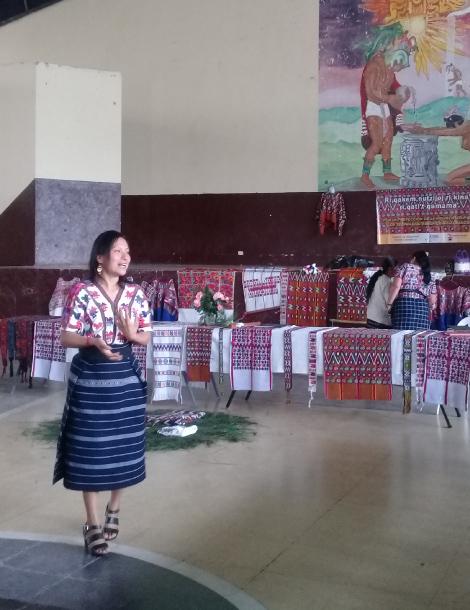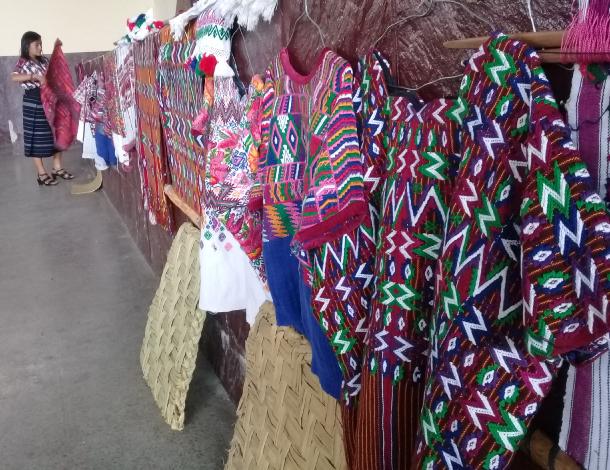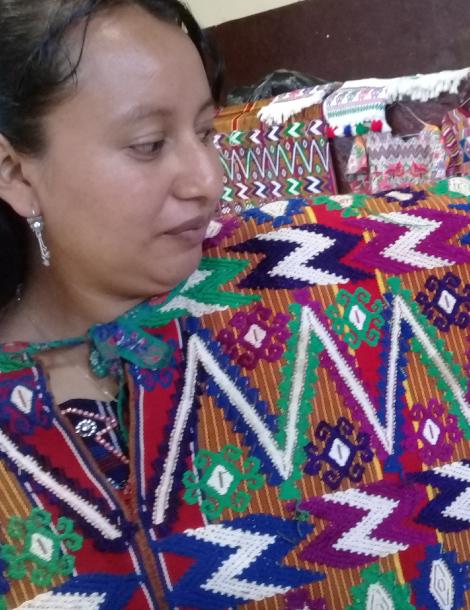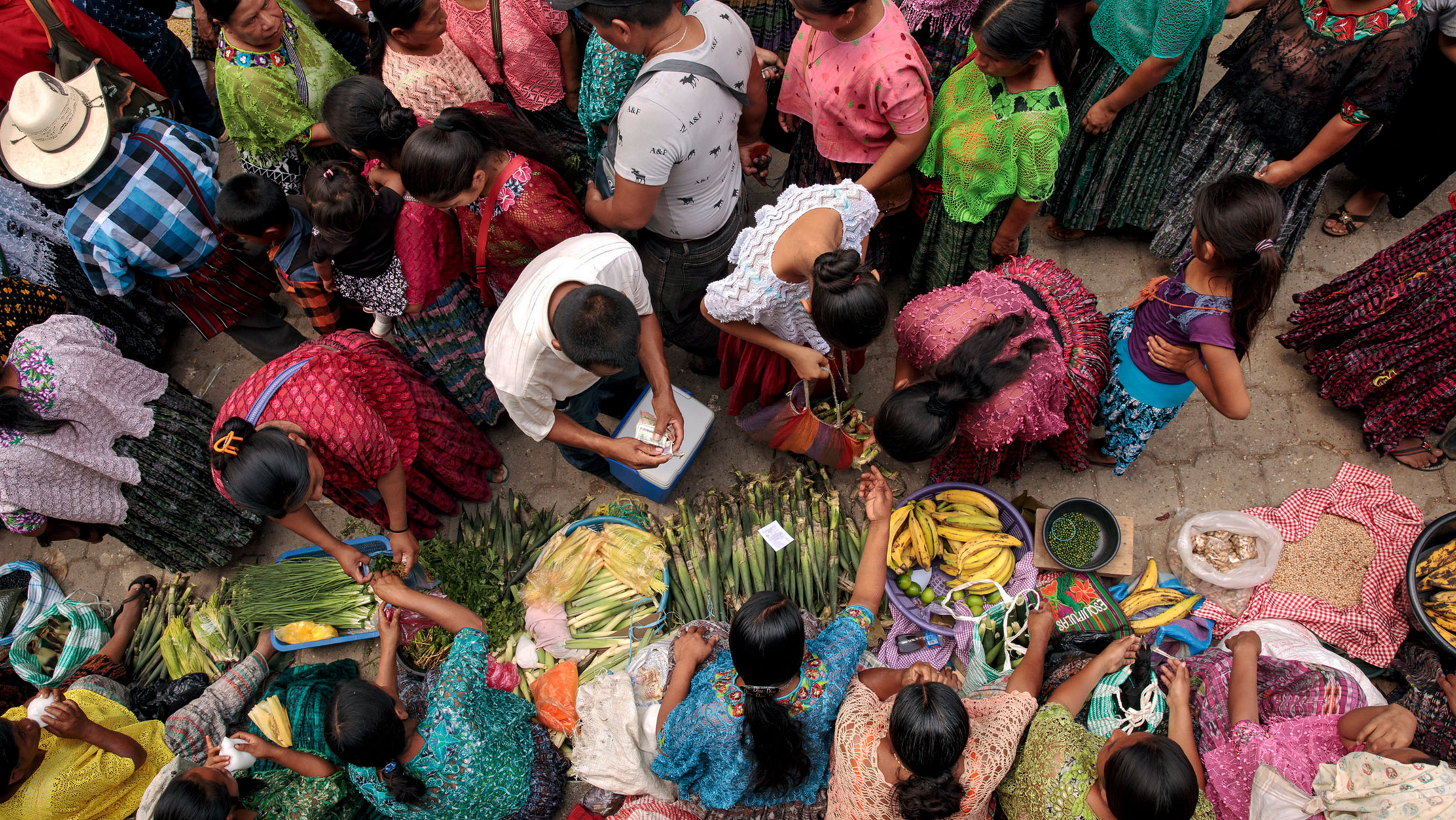Mayan weavers are organising to defend their art, pushing for new legislation to recognise and protect their ‘collective intellectual property’
“Mayan culture is like the threads of our weavings,” said Carmelina Lix Socop, referring to the brightly-coloured textiles that have become almost synonymous with Guatemala’s tourism industry. Variations of these clothes have also popped up in boutiques and fast fashion stores worldwide.
“We cannot separate our language from our food, our spirituality from our weavings. They are all part of the same culture and our struggle to protect our identity,” said the founding member of the local weavers’ council in Tecpan, about 80 kilometres outside Guatemala City, the capital.

Socop is one of numerous Mayan women in Guatemala who are now organising to defend their art – pushing for new legislation to recognise and protect their traditional designs and ‘collective intellectual property.’
Such legislation, the weavers argue, is necessary to challenge the appropriation of their art by companies and individuals around the world.
"We looked into the possibility of reporting businesses for intellectual property theft and discovered there is no protection for collective intellectual property,” said Milvian Aspuac, director of the Women’s Association for the Development of Sacatepéquez (AFEDES), part of the National Weavers’ Movement.
“That is when we realised we need to modify the existing laws,” she told me, and create new legislation “that recognises and protects Mayan designs as part of the collective heritage of the indigenous communities of Guatemala.”
Backstrap weaving with a hand loom tied at the waist (telar de cintura) is an art that has been passed down through Mayan communities for generations.
Today, these textiles and smiling images of women weavers are used to market Guatemala to foreign tourists (including on the government tourism agency’s Instagram account and advertisements across the US).
Customers at shopping malls and mass-market stores around the world will have also come across Mayan-inspired designs on the racks or online.
A growing number of Guatemalan designers and international companies such as UNIK, María's Bags (with handbags are on sale for nearly US$1500) and Hiptipico (with products for sale on ASOS, Urban Outfitters, and Free People platforms) draw on Mayan designs in their clothing.
Other brands such as Missoni and Valentino have also created fashion lines 'inspired' by Guatemalan textiles. Such products are often marketed to international ‘upwardly mobile’ clients.
But local weavers say they have not benefited from this international, commercial interest in their communities’ work – while they must also contend with new competition from mass producers, mechanical looms, and the potential patenting of their designs by other people or corporations.
In Tecpan, Socop, who is also a school teacher, told me that she is proud to wear the huipil (blouse) and corte (skirt) of her community.
Though, she said, many women who want to wear traditional clothing may end up buying mass-produced textiles instead because they are cheaper.
There is also a thriving local market for used huipiles, which can take weavers up to three months to make. A traditional huilpil might cost between US $50 to $250 but with proper care it could last for up to 35 years.
On mechanical looms, meanwhile, such textiles can be produced in just 30 minutes and cost as little as $20. Other producers simply print Mayan or other designs onto cloth and charge customers even less.
Local weavers can’t compete with these prices, says Aspuac at AFEDES.
The ability of individuals or companies to patent designs created and reproduced by communities throughout generations, she added, puts weavers at risk of financial or legal penalties if they continue to use them.
In Guatemala, there is also significant social pressure to abandon traditional dress
“Young girls and women have stopped wearing our clothing, because it is considered backward or because they experience discrimination.”
“If you wear our traditional indigenous clothing in Guatemala you become a María,” Aspuac at AFEDES added. “You are just another María. You will be insulted, spat at or treated like a servant.”

Jovita Tzul Tzul, a Mayan lawyer supporting the weavers’ movement, said that Mayan textiles’ ‘value’ seems to depend on who is selling or wearing them.
“Our clothes, when we wear them, are little better than trapos [rags],” she told me. “When they are worn by white bodies they become something beautiful.”
Some companies marketing Mayan-inspired designs have subcontracted work to local weavers. But AFEDES has also found that some such companies, which claim to pay fair wages to weavers, don’t actually do so, said Aspuac.
This industry is unregulated, she explained, with no minimum or maximum prices and relatively few weavers are organised in cooperatives that can demand better. Companies buy from individuals, negotiating prices one-to-one.
When AFEDES carried out an informal survey of the weavers in Santiago Sacatepequez, where their office is located, they found that women were getting as little as 50 cents and up to 20 dollars for their (new and used) huipiles.
Meanwhile, when weavers have attempted to organise direct exports of their products, they’ve come up against numerous obstacles.
Tzul Tzul explained that these obstacles include gaining necessary certifications from the national export authority. The system, she said, favours large commercial producers and not individuals or small cooperatives.
The collective intellectual property
Now, AFEDES and the national weaver's movement are demanding reforms to Guatemala’s existing intellectual property laws to recognise and protect the collective intellectual property of Mayan communities.
In February 2017, the national weavers’ movement proposed reforms to Guatemala’s copyright law to recognise collective intellectual property rights.
They also presented a legal challenge last December (and still before the courts) against the Guatemalan tourist board InGuat, for using images of Mayan women and weavings without their permission or remuneration.
Currently, the weavers are preparing a draft law to present to Congress to specifically protect Mayan weaving as part of Mayan (rather than national) heritage and regulate the use of their weavings and designs.
This draft law would establish mechanisms for the correct use of Mayan designs by third parties – and sanctions for those who break the rules. Local weavers’ councils, which are creating inventories of designs and patterns, would be responsible for granting permissions and managing royalties.
The weavers hope to complete and present this proposal by the end of the year. Though passing such a law before the next elections in June 2019 is unlikely – and they also anticipate opposition from tourism and export authorities.
In February 2017, the national weavers’ movement proposed reforms to Guatemala’s copyright law to recognise collective intellectual property rights.
They also presented a legal challenge last December (and still before the courts) against the Guatemalan tourist board InGuat, for using images of Mayan women and weavings without their permission or remuneration.

Currently, the weavers are preparing a draft law to present to Congress to specifically protect Mayan weaving as part of Mayan (rather than national) heritage and regulate the use of their weavings and designs.
This draft law would establish mechanisms for the correct use of Mayan designs by third parties – and sanctions for those who break the rules.
Local weavers’ councils, which are creating inventories of designs and patterns, would be responsible for granting permissions and managing royalties.
The weavers hope to complete and present this proposal by the end of the year. Though passing such a law before the next elections in June 2019 is unlikely – and they also anticipate opposition from tourism and export authorities.
The movement has further established local weaving schools to teach techniques and the meaning behind symbols and figures used. It emphasises that Mayan weaving is a complex and meaningful art.
These intricately-woven textiles, sometimes featuring ancient figures and symbols, aren’t made solely to be attractive; they may also reflect the history of particular communities or an aspect of the Mayan ‘cosmovision.’
In Tecpan, Socop was wearing a huipil from her community that has a zigzag pattern when we met. She said it represents one of the most important Mayan gods, Kumatzin, the feathered serpent, and the ups and downs of life.
“Our huipiles are full of geometry and mathematics,” Socop said. “The number of threads used can depend on the age of the wearer, or can reflect sacred numbers from the Mayan calendar.”
“All of this knowledge will be lost if we do not protect our art”, she warned.
* This article is part of a series on women's rights and economic justice from 50.50 and the Association for Women's Rights in Development (AWID). Originally published on 50.50
